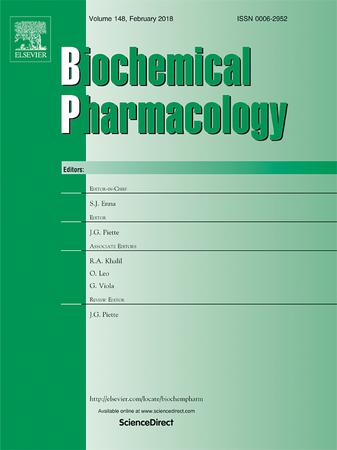The roles of bacteria on urolithiasis progression and associated compounds
IF 5.3
2区 医学
Q1 PHARMACOLOGY & PHARMACY
引用次数: 0
Abstract
As a common urological disease, the formation of urinary tract stones involves multiple factors, including genetics, the environment, dietary habits, and bacterial species (e.g., Proteus mirabilis and Escherichia coli). Previous studies have demonstrated that P. mirabilis primarily contributes to infectious urinary calculus formation by producing urease, an enzyme that breaks down urea into ammonia and carbon dioxide, thereby altering the urinary pH and promoting crystal formation and growth. In contrast, calcium oxalate (CaOx) stones are the main type of kidney stones, and the most common bacteria in CaOx stones are E. coli. Intriguingly, E. coli can also facilitate stone formation via flagellin and other virulence factors, which induce renal epithelial cell injury and increase crystal adhesion and aggregation. These bacteria play complex and multidimensional roles in the formation of urinary tract stones, necessitating further research to elucidate their underlying mechanisms. Here, we summarise the roles of common urinary tract bacteria, particularly P. mirabilis and E. coli, in forming urinary tract stones, aiming to enhance our understanding of urolithiasis exploration in the future.

细菌在尿石症进展中的作用及其相关化合物
尿路结石是泌尿系统常见疾病,其形成涉及多种因素,包括遗传、环境、饮食习惯、细菌种类(如变形杆菌、大肠杆菌)等。先前的研究表明,P. mirabilis主要通过产生脲酶(一种将尿素分解为氨和二氧化碳的酶)来促进感染性尿路结石的形成,从而改变尿液pH值并促进晶体的形成和生长。相比之下,草酸钙(CaOx)结石是肾结石的主要类型,CaOx结石中最常见的细菌是大肠杆菌。有趣的是,大肠杆菌还可以通过鞭毛蛋白等毒力因子促进结石的形成,诱导肾上皮细胞损伤,增加晶体的粘附和聚集。这些细菌在尿路结石的形成中起着复杂和多维的作用,需要进一步的研究来阐明其潜在的机制。在这里,我们总结了常见的尿路细菌,特别是奇异杆菌和大肠杆菌,在形成尿路结石中的作用,旨在提高我们对未来尿石症探索的认识。
本文章由计算机程序翻译,如有差异,请以英文原文为准。
求助全文
约1分钟内获得全文
求助全文
来源期刊

Biochemical pharmacology
医学-药学
CiteScore
10.30
自引率
1.70%
发文量
420
审稿时长
17 days
期刊介绍:
Biochemical Pharmacology publishes original research findings, Commentaries and review articles related to the elucidation of cellular and tissue function(s) at the biochemical and molecular levels, the modification of cellular phenotype(s) by genetic, transcriptional/translational or drug/compound-induced modifications, as well as the pharmacodynamics and pharmacokinetics of xenobiotics and drugs, the latter including both small molecules and biologics.
The journal''s target audience includes scientists engaged in the identification and study of the mechanisms of action of xenobiotics, biologics and drugs and in the drug discovery and development process.
All areas of cellular biology and cellular, tissue/organ and whole animal pharmacology fall within the scope of the journal. Drug classes covered include anti-infectives, anti-inflammatory agents, chemotherapeutics, cardiovascular, endocrinological, immunological, metabolic, neurological and psychiatric drugs, as well as research on drug metabolism and kinetics. While medicinal chemistry is a topic of complimentary interest, manuscripts in this area must contain sufficient biological data to characterize pharmacologically the compounds reported. Submissions describing work focused predominately on chemical synthesis and molecular modeling will not be considered for review.
While particular emphasis is placed on reporting the results of molecular and biochemical studies, research involving the use of tissue and animal models of human pathophysiology and toxicology is of interest to the extent that it helps define drug mechanisms of action, safety and efficacy.
 求助内容:
求助内容: 应助结果提醒方式:
应助结果提醒方式:


